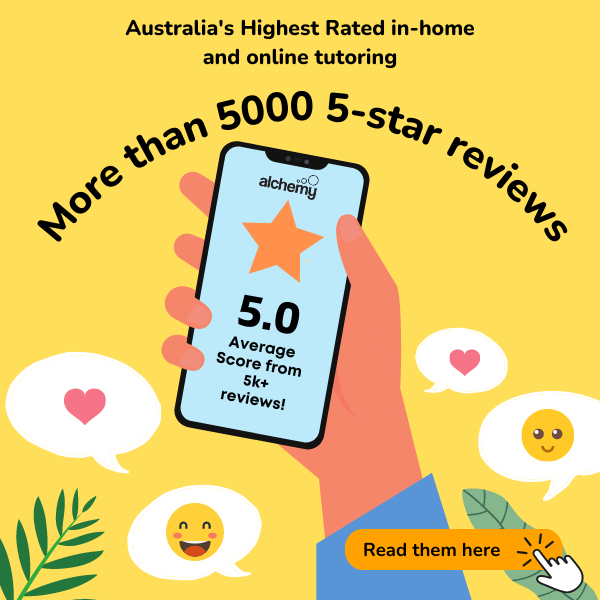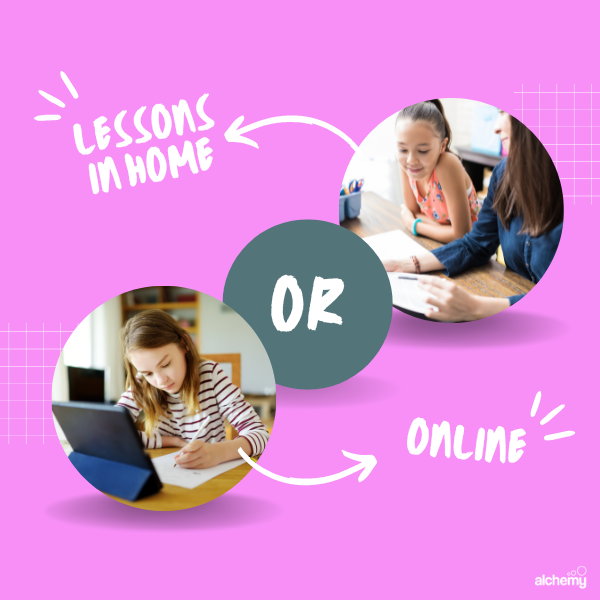Choosing the right education system for your child is an important decision that could determine whether your child excels or struggles in school. While many other factors can affect a student’s performance, putting them in the right system can drastically improve their chances.
Most parents face the primary decision of whether to homeschool or send their children to public school. Each has unique benefits and drawbacks, and understanding these basics can go a long way toward helping you decide whether your child may fit in either system.
What is Homeschooling?
Homeschooling involves parents taking on the responsibility of teaching their children at home. It is an alternative to traditional public or private school education that allows parents to customise the curriculum and tailor the lessons to the child’s needs and learning style.
Why not get in touch with one of our English Tutors for support?
Homeschooling is a growing trend because of the unique education experience it offers families and students. It allows for a more personalised and flexible approach to learning that caters to their individual needs and interests.
Parents can create a nurturing and supportive environment through homeschooling where children can thrive academically and emotionally.
The Structure of Homeschooling
Homeschooling has a more flexible structure than fixed schedules and classroom environments. Parents have more control and can create a personalised routine that suits their child’s learning preferences and family dynamics.
This flexibility allows for individualised attention, which allows children to learn at their own pace and delve deeply into subjects they are interested in.
Home schooling also provides learners with hands-on learning experiences outside of traditional classroom settings. Field trips to museums, nature reserves, and historical sites can enhance a child’s understanding of the subjects and spark their curiosity about learning. These experiences can make learning more engaging and increase retention in the student.
Common Misconceptions About Homeschooling
Homeschooling is shrouded in misconceptions that can discourage parents from considering this method of education. One common misconception is that students lack socialisation and that parents may not have the necessary expertise to teach effectively. However, homeschooling communities provide ample social interaction through extracurricular activities and participation in community events.
Additionally, parents can seek support from online resources, local homeschooling organisations and specialised curriculum materials.
Homeschooling offers a more tailored and focused approach to education, enabling parents to identify and nurture their children’s interests and strengths. Parents can also create a well-rounded educational experience for their children by leveraging various resources and teaching methods and preparing them for personal and academic growth.
What is Public School Education?
Public school education is a more traditional path that most children follow. The child is enrolled in a local public school, where they attend classes with peers and are taught by trained and certified teachers.
The schools follow a standardised curriculum approved by the respective school district or educational departments, which all students must adhere to.
Public school education has played a crucial role in shaping the future of young minds. It has imparted academic knowledge and instilled values such as teamwork, discipline and critical thinking in the learners that go through the system.
Public school students have the unique opportunity to interact with a diverse group of peers, develop a more profound sense of community, and understand different perspectives.
The Structure of Public School Education
The structure of a public school day is predetermined. Students attend classes for fixed periods and follow the set curriculum. This structure provides children with a routine and exposes them to different subjects. Students also get opportunities to interact and collaborate with classmates, fostering emotional and social development.
Public schools also incorporate extracurricular activities such as art, music, and drama into their schedules. These activities help develop the student’s creativity and talents and incorporate a well-rounded education that goes beyond traditional classroom learning.
Why not get in touch with one of our Online English Tutors for support?
Public schools aim to create holistic learning that caters to various interests and strengths of the student.
Common Misconceptions About Public School Education
One of the most common misconceptions about public schools is that they are not equipped to provide quality education.
Public school teachers have undergone extensive training, and the curriculum is designed to meet the set educational standards.
Public schools also offer a wide range of extracurricular activities, clubs, and sports teams that allow students to explore their interests outside of class.
Comparing Homeschool and Public
The best way to determine which education system is best for you is to compare public and homeschooling and what they offer.
Academic Performance
Academic performance is one of the main factors that makes it hard for parents to choose which education system best suits their children. Some learners thrive in public school systems, while others thrive in homeschooling.
Studies have shown that homeschoolers tend to perform at or above grade level compared to their public school counterparts. However, individual outcomes may vary based on the level of parental involvement, teaching methods, and resources available, and they may also vary from public school to public school.
The better performance of home-schooled learners can be attributed to the more personalised approach to learning that students get. Parents can adapt teaching methods to suit their child’s learning style, interest and pace. This individualised attention can lead to a deeper understanding of concepts and a more enriched educational experience.
Socialisation
Another aspect to consider when deciding between homeschooling and public schools is socialisation. Public schools have the advantage of offering an immediate social environment with a diverse group of peers.
With homeschooling, the students can engage in social activities through homeschool co-ops, community groups and extracurricular groups.
Both options provide opportunities for children to develop social skills and build lasting friendships. While the socialisation provided by public schools is diverse, homeschooling can foster more unique socialisation experiences. Without the constraints of traditional classroom settings, homeschoolers can interact with individuals of various ages, interests and backgrounds. This diverse social exposure can cultivate stronger communication skills and give the learner a broader world perspective.
Flexibility and Personalisation
Homeschooling has the upper hand in terms of flexibility and personalisation. Parents can tailor the curriculum to their child’s strengths, interests and weaknesses.
Homeschoolers have more opportunities and freedom to explore topics in-depth and devote more time to the subjects they love.
On the other hand, public schools are more structured with a more rigid environment, but not without benefits. Public schools foster more discipline and time management, exposing students to a wider range of subjects.
Why not get in touch with one of our English Tutors in Sydney for support?
Beyond academics, homeschooling also provides flexibility in scheduling, allowing families to take vacations during off-peak times, take field trips to enhance learning experiences and adjust daily routines to accommodate individual preferences. This adaptability can create a more relaxed and conducive learning environment where students can thrive.
Testing
Testing is one of the pain points of public education, and most parents have a bone to pick with it. While valuable for assessing students’ comprehension of different subjects, testing doesn’t cover the entire scope of learning and rarely reflects students’ abilities.
With homeschooling, parents have a general idea of the child’s progress even when formal testing isn’t done. Parents can select the books, correct the worksheets and have conversations with the students to understand how well they grasp a concept.
What’s more, studies have also shown that homeschooled students typically score 15-30 points above public school students on standardised achievement tests.
Factors to Consider When Choosing Between Home and Public Schools
While the comparison above gives parents an idea of how both education systems compare, it doesn’t apply to all students from either divide. Whether a parent chooses homeschooling or public school for their child should solely be based on the child’s needs and learning style. Therefore, parents must be certain about the factors they should look out for when considering whether public school or homeschooling is better for their child.
Your Child’s Learning Style
Understanding your child’s learning style is one key factor to consider when deciding between homeschooling and public school. Some children prefer a self-paced, independent learning environment, while others benefit from the structure and routine provided by traditional schooling.
Considering your child’s strengths, weaknesses, and preferences can ensure that their educational needs are met in the most suitable learning environment for them.
Evaluate Your Family’s Lifestyle
Your decision will affect the child and the family. When making this decision, consider the family’s lifestyle and daily commitments.
Homeschooling takes substantial time commitment from parents, whereas public schools relieve parents of the bulk of direct teaching.
While making the decision, you should consider your family’s work schedule, extracurricular activities and other commitments that may impact your ability to dedicate time to homeschooling.
Your Child’s Social Needs
Socialisation is a crucial aspect of a child’s development. You should consider their social needs and preferences and determine which system will better serve them
Public school may be the better option if your child thrives in a large social environment and enjoys interacting with peers regularly.
However, if the child thrives in smaller social settings or has special social needs, homeschooling provides a nurturing environment tailored to them.
It is also vital to recognise that homeschooling offers unique socialisation opportunities. Even with homeschooling, children can have plenty of opportunities to interact with peers. They can participate in community sports teams and other extracurricular activities like music and art lessons. Additionally, homeschooling allows for more flexibility in scheduling playdates and outings with friends, enabling children to develop meaningful relationships, albeit in smaller, more intimate settings.
Attention
Some students require more attention than others to grasp new concepts. With homeschooling, parents can provide personalised, one-on-one instructions to their children and have more time to ensure the students understand the concept. Teachers have limited time to address individual students’ needs in a traditional classroom setting.
Homeschooling allows parents more flexibility to tailor the curriculum to their child’s specific needs, pace, learning style, and interests. This approach gives the student a deeper understanding of the material and allows for a more comprehensive education and experience.
Closing Remarks
Choosing between homeschooling and public school doesn’t look the same for each family or student. You should take time to weigh the benefits of each option and how it will impact your family and the child’s social and academic goals and needs.
Your family’s lifestyle should also be considered, as should whether you have the capacity to provide a suitable learning environment. While making the decision, remember that each student is unique, and what works for one might not work for the other. Make an informed decision that will serve the student’s interests and also align with the family’s goals and lifestyle.





